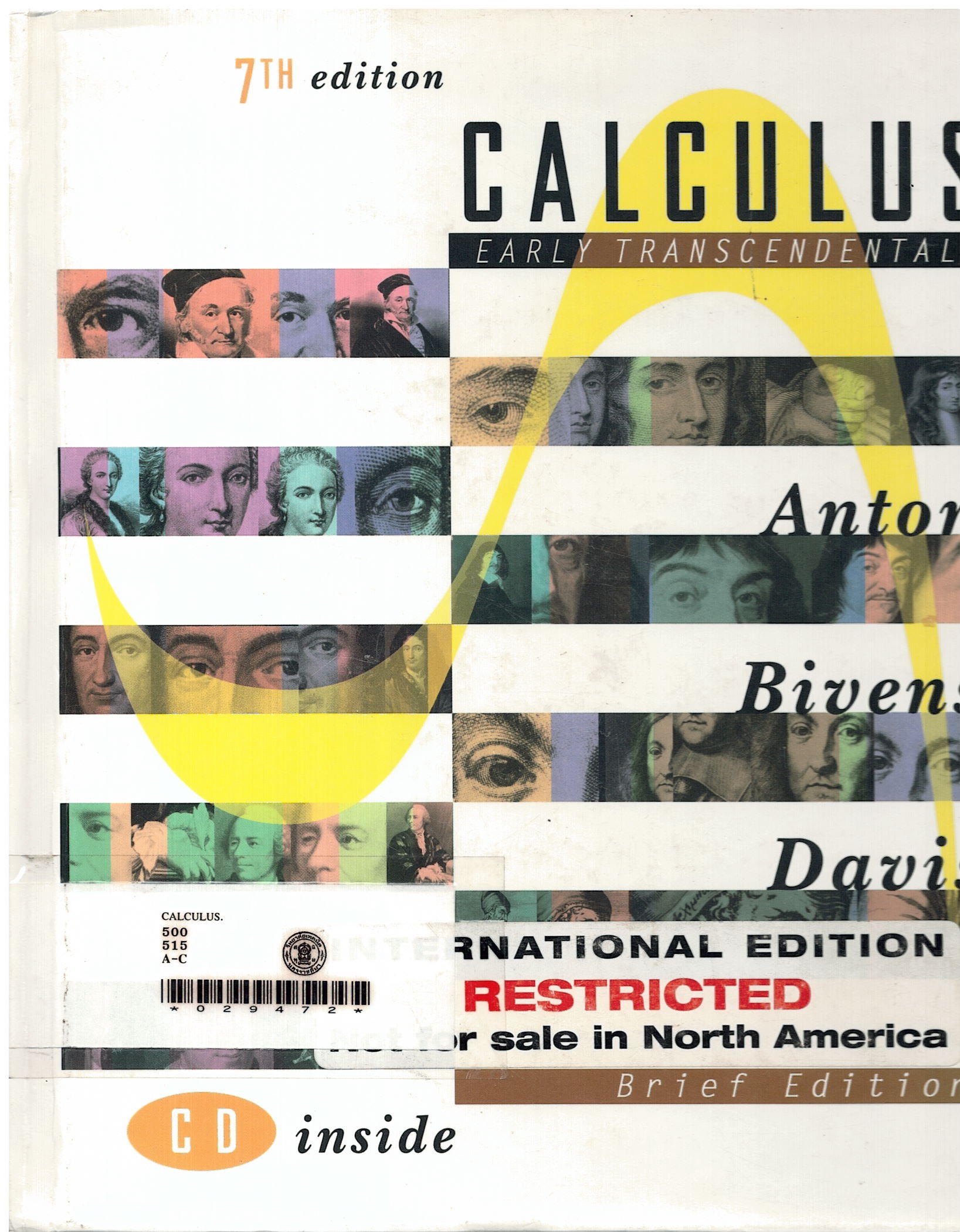ข้อมูลทรัพยากร

Calculus.
ประเภททรัพยากร : หนังสือเล่ม
ชั้นเก็บ : ตู้ 9 ชั้น 4 ฝั่งขวา
หมวด : 000
เลขหมู่หนังสือ : 500
สำนักพิมพ์ : WILEY.
ผู้แต่ง : Anton.
ยอดคงเหลือ : 7
เนื้อหาย่อ : ABOUT THIS EDITION
PREFACE
The primary goal of this edition is to foster conceptual understanding ioantre appreciation of the applicability of the subject matter. Some of the significant features of
this edition are as follows:
Multiple Versions For greater fexibility, there are now two versions of this text ㅡ late
transcendental and early transcendental. The late transcendental version covers
logarithmic, exponential, and inverse trigonometric functions after all of the basic
material on differentiation and integration has been developed; in the early transcendental
version, logarithmic, exponential, and inverse trigonometric functions are discussed
earlier. The late transcendental version is organized along the lines of the fifth edition and
the early transcendental version along the lines of the sixth edition. Both versions of this
text are available in two volumes, a brief edition that covers the single variable material,
and a multivariable edition that covers the multivariable material.
Technology This edition provides many examples and exercises for instructors who
want to use graphing calculators, computer algebra systems, or other programs. However,
these are implemented in a way that allows the text to be used in courses where
technology is used extensively, moderately, or not at all. To provide a sound foundation
for the technology material, we have included a section entitled Graphing Functions on
Calculators and Computers; Computer Algebra Systems (Section 1.3). The text is
accompanied by a CD containing the program Graphing Advantage Plus, which is a
Windows program that can be used for graphing, numerical integration, finding roots and
intersections, and curve fitting by least squares.
Horizon Modules Selected chapters end with modules called Expanding the Calculus
Horizon. As the name implies, these modules are intended to take the student a step
beyond the traditional calculus text. The modules, all of which are optional, can be
assigned either as individual or group projects and can be used by instructors to tailor the
calculus course to meet their specific needs and teaching philosophies. For example, there
are modules that touch on iteration and dynamical systems, equations of motion,
application of integration to railroad design, collision of comets with Earth, and hurricane
modeling.
Mathematical Modeling Mathematical modeling plays a prominent role in this
edition. A new section on mathematical modeling has been added early in the text
Section 1.7). In Sections 9.3 and 9.4 we discuss mathematical modeling with differential
equations, and in Section 10.10 we discuss mathematical modeling with Taylor series.
Applicability of Calculus One of the primary goals of this edition is to link calculus to
the real world and the student's own experience. This theme starts with the Introduction
and is carried through in the examples, exercises, and modules. Applications given in the
exercises have been chosen to provide the student a sense of how calculus can be applied.